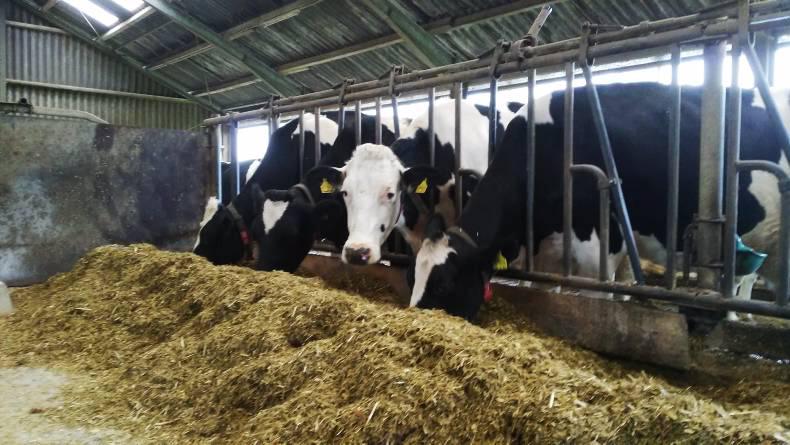Cheese is produced four times each week, mainly Emmental and cheddar. All of this is going into the local market place, an area of around 100km radius, with 12m people in population. On any given Friday in Dusseldorf, the business sells 50% of its weekly sales.
Among a group of recent Irish visitors there, James O’Brien from O’Brien’s Artisan Cheese in Ballyahill, Co Limerick, was particularly impressed with the Stratemann farm where 700,000 litres of milk is converted to cheese every year.
“Obviously from producing cheese at home, the cheese-producing farm was really interesting,” said O’Brien. “He got into farming knowing that that he couldn’t expand to more than 75 cows. He looked at adding value to milk by producing cheese and definitely found a market there.”
At €1.8m turnover, the Stratemanns are getting €8.50/kg to €9.00/kg for the cheese.
“So at a time when farmers are only getting a base price of 26c/litre for milk it was obviously a very profitable part of the business,” said O’Brien.
The cows are yielding 9,500 litres/year from a diet of mainly maize and straw. The Stratemanns grow 20ha of maize and contract in the main machinery needed for planting and harvesting, costing €300/ha. However, the installation of a robot caused an increase in Somatic Cell Count (SCC).
“I was surprised that the robot caused an increase in the somatic cell count,” said Aoife Ladd, Castletownroche, Co Cork. “It went up from an average of 170,000 to up to 220,000, which is a big jump when everyone else is trying to get it down. It was interesting that he actually does leave out the cows to grass for a small bit but he doesn’t let them out until after 12 o’clock. He holds them in the yard at that stage and they have to be milked a minimum of four hours before he’d let them out.”
Listen to a discussion of this farm walk in the podcast below:
Keeping it simple
The business employs 10 full time and 20 part time staff across the farm shop, cheese production and bakery. However the real driver of the business was the authenticity of the cheese product.
“His ability to manage really struck me as clarity on where he wanted to spend his time, to ensure he was getting the best return from his time,” said Sean Coughlan, Adergoole Macra, Co Mayo. “He wanted to keep the farming side of it very simple, he knew that making and selling cheese was the real driver of his business and he wanted to concentrate on that. But he also realised that the secret to making and selling his own cheese was that he was the farmer that actually produced the milk. He wanted to streamline, he said that 75 cows was his limit and he didn’t want to get any bigger when he was surrounded my much bigger farms of up to 1,000 cows.”
Read more
This farm visit was part of a three-day trip organised by Ornua and Macra na Feirme. On the first day, the group got to look inside Kerrygold’s German success story.






 This is a subscriber-only article
This is a subscriber-only article
















SHARING OPTIONS: